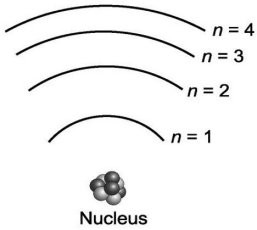Compare and contrast the sediments deposited in continental, transitional, and marine environments. Give specific
examples of these sediment types and the environments where they commonly form. Fill in the blank(s) with the appropriate word(s).
The student should discuss continental environments, which commonly are the depositional
site for immature conglomerates and sandstones, swamp deposits, glacial tills and outwash
deposits, and aeolian (wind-derived) sediments. Transitional environments commonly are the
depositional site for beach sands, delta deposits, and lagoon deposits. Marine environments
commonly are the depositional site for shales, deep-ocean marine carbonates, and organic
reef deposits, as well as large-scale, thick evaporite deposits.
You might also like to view...
What are some risks and rewards of living on a floodplain?
What will be an ideal response?
Consider the various frequencies of the three photons emitted from the following three individual electron transitions in the figure below: n = 3 to n = 2; n = 2 to n = 1; n = 3 to n = 1. These transitions would produce three spectral lines in a spectroscope. If the energy spacing between the levels were equal, would this affect the number of spectral lines?
A. Yes, two otherwise separate lines would converge into a single more intense line. B. No, but some would then require a prism in order to be seen. C. No, but the spacing between the spectral lines would change. D. Yes, two otherwise separate lines would converge into a single less intense line.
With the aid of a diagram, show why an intensifying surface low-pressure centre, located just east of a deep upper-level trough, will often move in a northeasterly direction.
What will be an ideal response?
An average person walks at a speed of about ?.? km/hour, and runs
at about ?? km/hour. Compare these rates with the average speed you calculated for Hurricane Georges. What will be an ideal response?